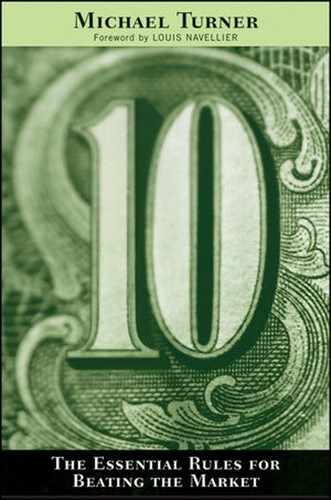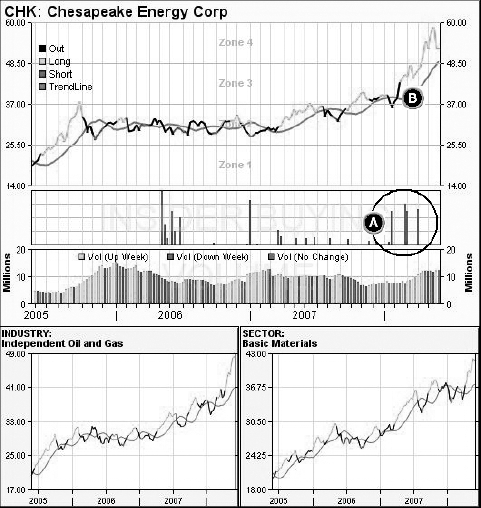By the time you get to this rule, you are well on your way to knowing how to find the best stocks to own, when to buy them, and when to sell them. You also know how to avoid getting emotionally attached to your stocks.
Now, it is time to start doing a little refining of your growing and evolving investment strategy. Let's move on to see what we can glean from insider trading.
In this rule, you will learn how to analyze legal insider trading and how to use the data to help you make a final, perhaps critical, decision on selecting and/or ranking the stocks that you may consider adding to your portfolio. Finding the right stock that fits all of your requirements for buying out of many thousands of stocks is truly akin to finding a needle in a haystack. We want to narrow that search down to just a handful of the best of the best. We will do that by using insider trading data, but we'll use only one very specific type of insider trading data.
Insider trading is a term that most investors have heard and usually associate with illegal activities. But the term actually includes both legal and illegal conduct. The legal version is when corporate insiders—officers, directors, and employees—buy and sell stock in their own companies. When corporate insiders trade in their own securities, they must report their trades to the Securities and Exchange Commission (SEC). Illegal insider trading refers generally to buying or selling a security, in breach of a fiduciary duty or other relationship of trust and confidence, while in possession of significant nonpublic information about the security. Insider trading violations may also include "tipping" such information, securities trading by the person "tipped," and securities trading by those who misappropriate such information.
Insider trading is illegal only when a person bases his or her trade on information that is unavailable to the public. It is also illegal to give insider information to another person, whereby that person makes equity trades based on that information. There is very little illegal insider trading since those who practice it are so easily caught and almost always face significant fines and jail time. For example, Martha Stewart was convicted of lying to the SEC regarding insider trading information. She was told by her friend Sam Waksal that his company's (ImClone) cancer drug had been rejected by the Food and Drug Administration (FDA) before this information was made public. The rejection by the FDA was very damaging to the company and resulted in a dramatic drop in share price. However, Martha Stewart avoided this drop in share price because she sold her shares before the FDA news was made public.
On the legal side of insider trading, there are two trades that can occur: insider selling and insider buying. Let's just deal with the legal side. A lot of investors think that insider selling is important information to know.
When I speak to large audiences, while the room is filling up, I like to chat with the audience and get to know them a little better and to give the audience an opportunity to warm to my presentation style of speaking. A question that I often ask is, "Could I see a show of hands of everyone who believes it is important for investors to monitor insider selling?"
I am always surprised at how many hands go up, although each year there seems to be fewer and fewer, which is a good thing.
Many investors seem to think that if an insider is selling, it must be because the insider knows the company is doing poorly or will soon have problems. This is almost always not the case because if an insider sells on this information, that person is committing a felony. There are hundreds of reasons for insider selling. Here are just a few:
The insider is required to exercise stock options and must sell stock to pay for the options.
The insider needs money to pay for his/her children's college education.
The insider needs to pay off major medical bills.
The insider wants to diversify his/her portfolio and owns too much of the company's stock and, therefore, must sell shares.
The insider owns too much of the company's stock and, due to the requirements of an upcoming merger, the insider is required to divest (sell) a significant portion of his/her shares in order for the merger to take place.
The insider wants to buy a second home or pay off the mortgage on his/her first home.
In fact, more times than not, when insiders sell, it is likely that the company is doing well and will do well in the future. I know that sounds counterintuitive, so let me explain.
Because insider trading is so highly scrutinized by the SEC and because there is the potential for serious consequences regarding illegal trading, many corporate insiders wait until there is not even the hint of bad news on the horizon before selling shares. Insiders can be somewhat paranoid about selling shares at any time, since it is possible for bad news to come out later on the company. Even if they didn't know about the news in advance, they will likely be investigated and accused of trading on insider knowledge.
This is why many executives have a preset formula for selling shares so that they can rightly claim that the selling of shares was predetermined by formula and had nothing to do with insider knowledge.
So, with this in mind, my philosophy is to ignore insider selling.
However, there is only one reason for insider buying: The insider believes the stock in the company is cheap compared to where it should be. Insider buying can also be deemed illegal if the insider is buying stock based on information not available to the public. But insiders have the opportunity to look at the company from the inside out. No one is likely to know better about the health and future growth of the company than an insider. When an insider buys, it is almost always a very good indication that good things are more likely on the horizon for the company, rather than bad things.
When you have several stocks that are otherwise equal in quality and opportunity for pricing growth and you are trying to decide which is the better stock to buy, always look at the insider buying.
Figure 6.1 shows an example chart of CHK (Chesapeake Energy Corporation). At the time of this writing, CHK was a Demand Fundamental buy-rated stock, according Rule 1. But at the same time CHK was buy-rated, there were more than 40 other stocks that were also buy-rated, among the 6,000 stocks that I track at any one time.
When I began narrowing down my list of stocks to buy, one of the major criteria that I consider is insider buying. I consider it a very big plus when a stock that I am considering to buy has a recent record of strong insider buying.
Take a look at Circle A in Figure 6.1. Notice how the significant increase in insider buying coincides with a low point in the stock's market price (Circle B). But what is so very important and often very typical is the directional move of the stock's pricing trend in the months that followed that strong level of insider buying. The stock went on a multimonth run, with the market price of shares moving nicely from the lower left to the upper right.
When you are looking to add a new position to your portfolio, you want as many positive, growth-oriented activities as possible supporting your trade. It is almost never a good idea to be a loner when it comes to buying stocks. It is far better to be in with the crowd that is pushing your stock's price higher and higher. So when you are trying to make a final decision on which stock, look at buying alongside the insiders.
But as with the other rules in this book, do not use insider buying as the only criterion for buying a stock. When I am considering a new stock to buy, insider buying is one of the last things that I consider, not one of the first.
Look back at Figure 6.1. There are many reasons to buy this stock at Circle B, not the least of which is insider buying. The trading volume was increasing, which is a very good sign. The industry, independent oil and gas, was moving into bull mode, which was extremely positive and supported buying the stock. The sector, basic materials, was also moving into bull mode.
Every technical indicator was positive, including insider buying. With the Demand Fundamental supporting the trade and the technical supporting the trade, CHK was certainly one of those screaming buy situations at Circle B.
I hope you see how clearly you can arrive at a decision to buy or sell with this methodology. You don't have to read bulletin boards, analyst reviews, trade journals, and financial newsletters, or listen to talking heads on TV to know exactly when to buy and exactly when to sell with this methodology.
By this point, you should begin to see how you can take control of your stock market investment strategy and know exactly what to do in all markets and at all times!


